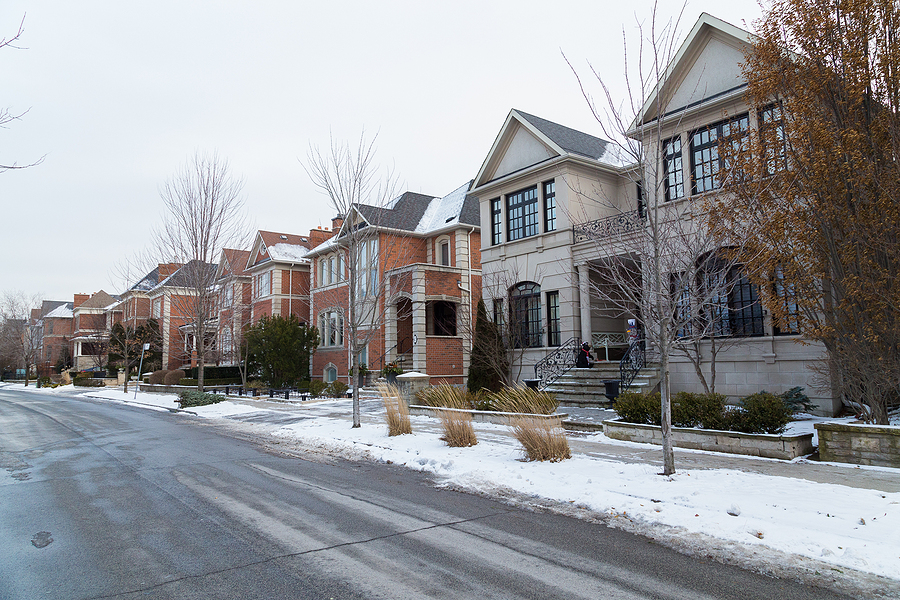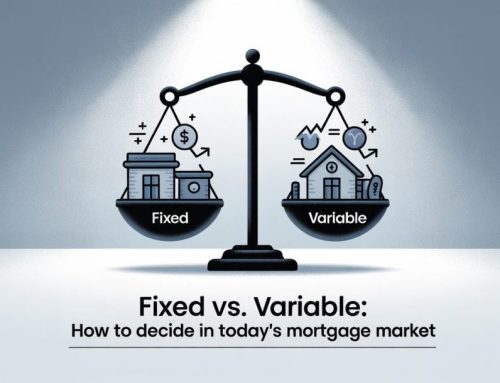If you’ve been keeping even a casual eye on the mortgage market, you’re likely aware of the chatter about potential rate drops to come at some point this year. Naturally, we all aim for the best deal, seeking to lock in the lowest possible rate. In a market where rates are expected to fall, it’s common for people to delay their decision to ensure they are snagging the lowest mortgage rate possible. This cautious approach has led many to become vigilant market watchers, patiently waiting for that perfect moment to lock in their mortgage rate.
While this sounds like a good idea in theory, it can be an expensive choice in reality.
It’s expected that the Bank of Canada will be dropping their rate anywhere from 1.00% to 1.75% before the end of 2024, with further cuts into 2025. But fixed mortgage rates have a mind of their own and can move in either direction at any time. In anticipation of the expected cuts from the Bank of Canada, fixed mortgage rates have dropped by greater than 0.75% over the last two months.
But will the downward trend continue along the same trajectory?
Waiting to Lock in a Rate can be Costly
Even when mortgage rates are in a downward trend as they are now, it’s not guaranteed to be straight, downward path. There can be times when there are bumps along the way. Rates could be dropping week by week, but then the following week, WHAM! The lender with the lowest rate decides to hike their rate.
While I’m usually pretty good at anticipating fixed rate increases, it’s not something that I have any control over. Sometimes, a lender may increase their fixed rate unexpectedly, without any clear external cause. This could happen if they’ve set aside a specific fund for a promotional rate, and once that funding is depleted, they’re forced to implement a rate hike. Additionally, if a lender is offering an exceptionally low rate, their underwriting departments might become overloaded. To manage this influx and allow time to catch up, they might raise their rate, effectively pausing the flow of new applications.
The Relationship Between Bond Yields and Fixed Mortgage Rates
Fixed mortgage rates are closely linked to bond yields, with a lender’s profit margin being directly connected to them. When bond yields fall, lender profit margins rise, which often results in lower fixed mortgage rates. The current downward trend in yields began in mid-October 2023, and continued to decline for the remainder of the year. This is what led to the lower mortgage rates we are seeing today.
However, since the beginning of 2024, there has been a noticeable uptick in bond yields. If this trend persists, mortgage lenders will be compelled to raise their fixed rates. As one of the top brokers in the country, I have access to exclusive rates from certain l. When their margins are higher, we’ll jump on that opportunity as we know we can expect them to present us with lower rates to offer our clients.
However, when margins are lower, these lenders can’t be as competitive, leading to slightly higher rates. As the recent increase in bond yields has cut into mortgage lender profit margins, we’re seeing slightly higher fixed mortgage rates compared to what we were able to secure in some situations just a week ago.
Just to be clear, fixed mortgage rates have not changed for the most part. This applies only to certain categories, which won’t affect the majority of our clients. Particularly, purchases valued at greater than $1 million, investment properties, and mortgage refinances.
Securing Peace of Mind with a Rate Lock
Locking in your mortgage rate is like securing a promise that your rate won’t climb any higher. You’re protected. But locking in a rate is not as simple as pressing a button and the rate becomes locked. It involves a full mortgage application and document package, submission of your file to a lender, which then needs to be fully underwritten. Upon mortgage approval, you’re issued a mortgage commitment which confirms your rate.
Now here’s the best part!
Should the rates drop further, we have the flexibility to get your rate lowered. This applies even if you’ve already signed your mortgage commitment and your file is fully complete and confirmed. Essentially, you’re not just protected against rising rates; you’re also positioned to benefit from any potential decreases to come.
We’re constantly monitoring rates our clients. If the rate drops, then we’ll ensure that you get the lower rate, which can be done right up until a few days before closing. There is the lowest rate now and then there is the lowest rate at closing… and it’s the one at closing that is most important. Actually… it’s the only rate that matters!
Conclusion
The only way to guarantee you a specific rate is to get it locked in now. There is zero risk by getting your approval in place right away, complete with a locked rate. But if you choose to wait, then you’re accepting the risk that comes along with it, and there are some who may end up paying the price. If you wait until it’s too late, then you’ll have no choice but to accept the higher rate.
Securing the lowest rates for our clients is something that we take very seriously. But we’re not just committed to saving you as much money as possible. We’re equally devoted to offering you expert, professional advice and a mortgage experience that sets a new standard of excellence.
This commitment to superior service and unparalleled experience is not just a promise – it’s a principle we live by and take very seriously. It’s our way of showing how deeply we care about every aspect of your mortgage journey and one of the key reasons why we’re one of the most sought-after mortgage brokers in the country.
We’re looking forward to showing you what we can do!








Leave A Comment